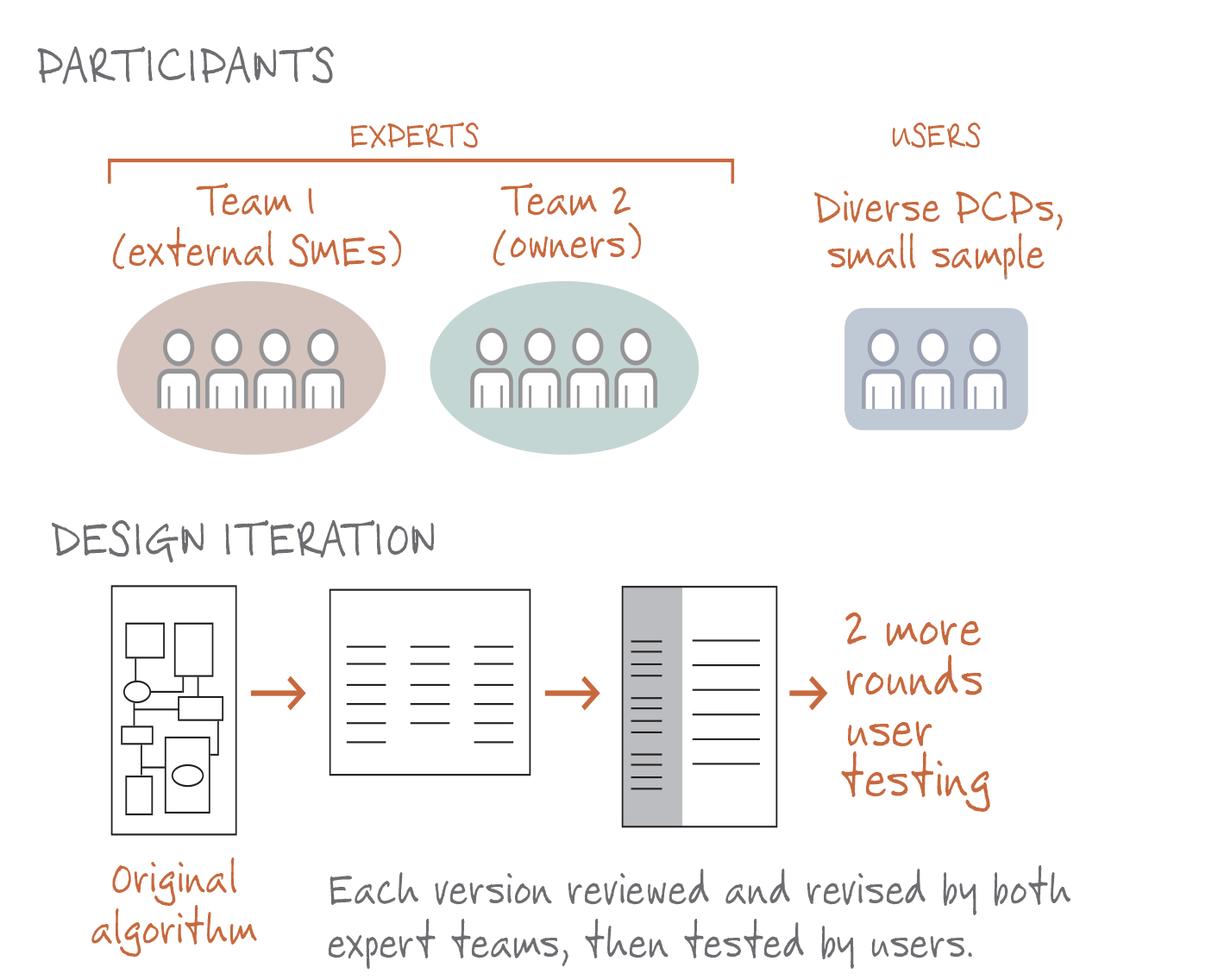CLINICAL PROJECT
Create a simple decision aid to help primary care clinicians follow new opioid prescribing guidelines for chronic pain
Services
Design strategy and facilitation
Prototyping and research
Information design and layout
Outcomes
Transformed a complicated treatment algorithm into a practical tool shaped by leading addiction experts and validated by primary care physicians.
Delivered a validated decision aid (multiple prototype/test/revision cycles) within a 10-week development cycle.
Situation
The United States faces an unprecedented opioid and heroin addiction crisis. Rising rates of prescription opioid use correspond with increased harm to patients, and fuel use of cheaper illicit opioids like heroin, resulting in a serious and urgent public health challenge.
In response, the Centers for Disease Control and Prevention published the CDC Guideline for Prescribing Opioids for Chronic Pain. The guideline provides recommendations for primary care practices, including strategies for assessing and reducing the potential for harm that can result from prescribed opioids.
How we helped
Emphatic was asked to work with a team of independent experts and a team at the CDC to create a practical checklist that could help clinicians understand and follow the new guidelines. Our role was to coordinate input from both teams, develop prototypes, analyze feedback from user testing cycles, optimize the information design, and create a visual design consistent with related opioid materials and resources.
Over the course of ten weeks, we helped the teams define and describe critical pause points in clinical workflow, prioritize key assessment and prescribing behaviors, craft actionable language that is both concise and clear, and present the content in a practical user-friendly format.
Links and resources
- Clinical tools published by the CDC to support the Guideline for Prescribing Opioids for Chronic Pain.
Sample
Analyzing the draft clinical algorithm
Published tool
Return to: Aids for Clinical Environments

